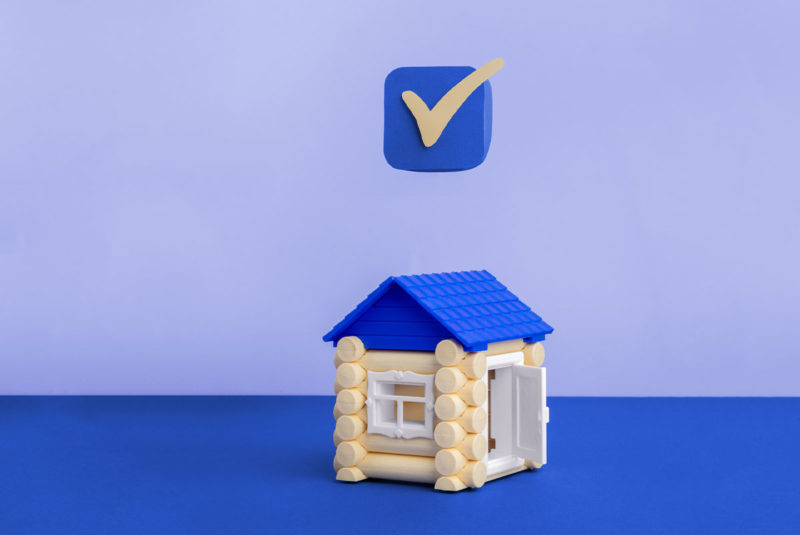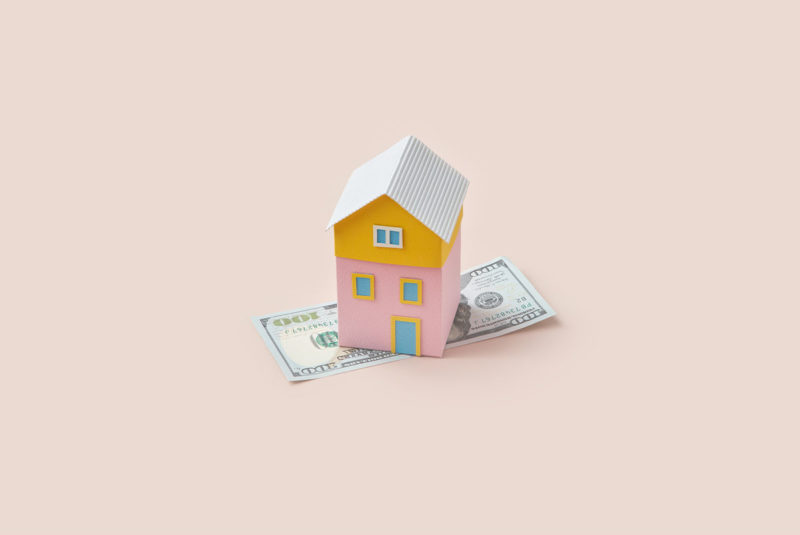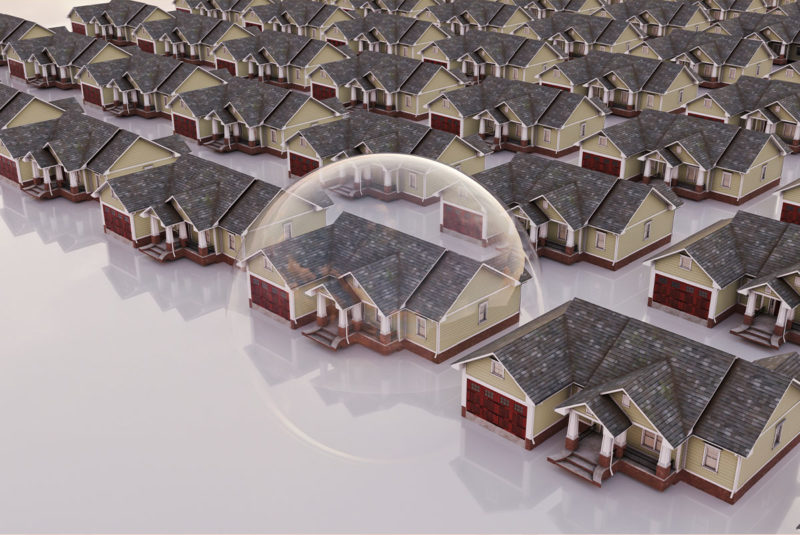Ready To Buy a Home?
Get Approved to Buy a Home
Rocket Mortgage® lets you get to house hunting sooner.
Home flipping can be a profitable venture if you know how to do it. But many people are afraid to get their feet wet. If you’re curious about flipping houses, we can tell you that it’s not as scary as you might think.
You don’t need a ton of money to get started. But you do need determination. You can have a lot of fun while you’re turning into a house-flipping pro – and even make a good living out of it.
Our guide to flipping houses is comprehensive. We go over how to start rehabbing houses for a profit, the mistakes you’ll want to avoid – especially if you’re new to flipping houses – and share key strategies on getting the financing you need to start.
What Is House Flipping?
House flipping refers to buying homes that might need a little love and attention and fixing them up to sell for a profit. Instead of buying a property to live or do business in, you invest in a property to make money when you sell it.
You’ll need to research to make sure you’re buying the right properties. Then you’ll need to carve out some time to make the repairs. If you can manage your repair costs and your time, flipping houses is a great way to make money on the side. Some people even make a full-time living flipping houses.
Should You Flip a House?
Flipping a house isn’t for everyone. Here are some questions you should ask yourself before you commit:
- Do I have a good understanding of the local real estate market?
- Do I have any special skills that would help me flip a house?
- Could I handle the financial fallout if I had trouble reselling the house?
If the answer to any of these questions is “no,” press pause here and take some time to consider whether this method of generating income is right for you.
Even if you answered “yes” to each question, there are still pros and cons to consider.
PROS of flipping a house👍
CONS of flipping a house👎
How To Flip a House in 7 Steps
You’ve probably seen your fair share of cable shows about people who flip houses (think: “Property Brothers” or “Designed to Sell”). And you’re probably wondering if you need some special talent to pull it off with the same levels of success. House flipping shows aren’t reality, but anyone with the right mindset and resources can flip homes.
You’ll need to research the housing market, know your limits, work within your budget and develop a sense of when it’s time to bring in help.
Here are seven steps to successfully flip a home:
1. Research the housing market
Rushing into house flipping without doing your homework isn’t a good idea.
If you have a potential property in mind, look at what other homes in the neighborhood are selling for and see if there are bidding wars for similar houses. A bidding war would signal high demand for that ugly duckling of a house that only needs some love and attention.
You should also figure out the age of the home, how close the home is to schools, shopping, parks and other local amenities and whether the area’s community is growing.
Be sure to research what’s being built in the area. If a new highway ramp or a big nightclub is going up near the neighborhood, it might not be the best place to flip. And you should probably avoid buying a home in an area where more people are moving out than in.
Weigh the cost of flipping an older home. Older homes usually require more renovations to add modern-style amenities and bring them up to building codes. Sellers who don’t want to invest in repairs might offer older homes at discounted prices.
2. Make a budget (and follow the 70% rule)
It’s super important to know what you can afford so you don’t go in over your head. A good rule of thumb is to follow the 70% rule, which states that you shouldn’t pay more than 70% of any property’s after-repair value (ARV) minus the repairs.
ARV is the estimated resale value of a home after its repairs and renovations are completed. Your goal is to make improvements that increase a home’s value by more than it cost to renovate it.
Let’s say the home you want to flip needs new kitchen lighting, updated faucets, an exterior paint job and new flooring. You’ve estimated that the repairs would cost $25,000. And once the renovations are done, the ARV would be $200,000.
The ARV minus the cost of repairs is $175,000 ($200,000 – $25,000). And 70% of $175,000 is $122,500 ($175,000 x .70, or 70%). You shouldn’t pay more than $122,500 to buy the home and turn a profit.
When you use this strategy, you’re giving yourself a nice buffer to cover closing costs, taxes, real estate agent fees and other non-repair expenses.
3. Know your skills
Do you have skills you can use to help reduce your repair costs? Can you install a dishwasher, paint a room or fix a leaky faucet? If you answered “yes” to any of those tasks, you can save a lot of money by doing the work yourself. If home renovations aren’t your forte, maybe you’ve got great business skills or you’re a persuasive person.
You don’t need to be a construction pro or have the know-how to repair everything. You can hire professionals to do the work and still turn a profit. Taking stock of your skills and abilities is important. You’ll know what you can and can’t handle on your own.
4. Get financed
Getting a mortgage for your first house-flipping venture might be tricky. Because mortgage lenders typically view home flipping as a riskier investment than other types of home purchases, they’re more likely to lend to experienced real estate investors versus up-and-comers. But don’t lose faith. It’s still possible to get financed. And financing gets easier after you’ve completed your first sale.
The home will need to meet certain contingencies, like passing a home inspection, to qualify for a conventional loan. You may need a higher credit score and a larger down payment than you would need for a government-sponsored loan to qualify. Lenders will ask you to submit tax returns, proof of income and bank statements.
You can explore other financing options if you can’t qualify for a conventional loan.
You can try a hard money loan. Hard money loans are short-term loans that offer 60% – 80% of a home’s loan-to-value (LTV) ratio and typically have high interest rates. Borrowers commonly take out loans that are larger than the home’s purchase price, freeing up money to pay for renovations.
Hard money lenders are usually more flexible with credit scores because they’re mainly focused on the property, not your ability to repay the loan – which is what credit scores represent.
5. Find and buy the house
With a budget in place, you can focus on homes that fit your price range and your abilities. You may want to focus on homes that are close to schools, in older neighborhoods or areas where lots of people are moving in. Houses that are close to other amenities such as parks, shopping centers and major highways can be excellent choices, too.
Remember, you’re going to flip the house. You’re not looking for your dream home. You want to find a property that’s within your price range and ability to rehab for profit.
Even if the home doesn’t need to pass an inspection to qualify for a loan, you should request an inspection to identify all the issues you’ll need to address. And home inspections may give you more leverage when you’re negotiating the sales price.
If you have little to no experience buying homes, work with a real estate agent to make an offer and negotiate with the seller. Once you’ve completed the sale, you can begin rehabbing the home.
6. Repair and renovate
You should focus your time and efforts on repairs and renovations that are most likely to add value to the home. The upgrades you make with your own two hands can add sweat equity to the home’s sales price. Any DIY project to renovate the home will qualify as sweat equity and will likely count as added home value during sales negotiations.
Let’s say you renovate the kitchen with new lighting fixtures, a new sink, new ceramic tile and a fresh coat of paint. You just performed a service for the future owners of the home – and your time is worth money.
You can also maximize your profit by cleaning up the outside of the home, making critical repairs necessary to pass inspection and working with the right contacts in the housing industry.
7. Sell the house
There are several ways to sell a house.
You could do it yourself. But this isn’t a good idea if you’ve never sold a home. You won’t know what paperwork needs to be filled out, what legal considerations need to be made and what negotiation strategies to use.
If this is your first time, this is where a real estate agent can come in clutch. Real estate agents have relationships with lenders and attorneys. They also have relationships with other agents, which could make it easier to find a potential buyer.
Another way to sell a house is through an auction. Most home flippers prefer to buy – not sell – homes from auctions. But if you need to sell the home fast and there’s a lot of interest in the home, an auction could help you on both fronts. Home buyer interest would drive the price up, and an auction sale usually closes much faster.
Frequently Asked Questions About Flipping
We answer some of the most asked questions people have when they start thinking about flipping property.
How much does it cost to flip a house?
There is no universal dollar amount. What it will cost you to flip a property will depend on many variables, beginning with the property’s purchase price.
To estimate the cost, you’ll need to factor in the purchase price of the home and its closing costs.
Then you’ll need to estimate the cost of repairs and the cost of reselling the property (think: legal fees, real estate agent commission, etc.)
What is the 70% rule in house flipping?
You shouldn’t pay more than 70% of a property’s after-repair value (ARV) minus the cost of repairs. (Scroll up to our example to see how the math works.)
Is it profitable to flip houses?
If you’re good at it, the answer is yes. To increase your chances of turning a profit, choose your property wisely. You’ll likely take a loss if you pick a home with more repairs than you budgeted for.
Flip Without Flopping
So, what do you say? Do you have the resolve to make flipping homes a one-time, side or full-time gig? And we know it takes more than feeling resolved. It also takes financing. Most beginners rely on extra streams of income for their first sales because it takes time to turn homes around for profit.
Feel free to refer to our guide to help you succeed with your first, fourth or fiftieth flip. But before tackling your first fix-and-flip project, make sure you’re ready to take on the costs of flipping a house. Check out our debt-to-income (DTI) calculator to get a pulse on your financial health.
Debt-to-Income Calculator
❓ Curious what your debt-to-income (DTI) ratio is? Enter your figures and let the magic begin!
What Is DTI?🟢 On Track – Hey money maestro! You’re right on track for your house-buying journey! Make sure you have all the information you need to make the right choice.
How much can I afford?🟢 On Track – You’re right on track for your house-buying journey!
How much can I afford?🚨 Above Recommended DTI – Some lenders have different requirements to qualify but it’s worth looking into your credit and finding out what you can afford within your budget.
What Is DTI?🚨 Too Much Debt – Seems like you’ve got a little too much debt to qualify with the income you’ve put in! Do you want to try again?
Looking to make a change?
Whether you want to buy a house, refinance or take cash out, you’re not alone. The experts are just a click away.
The Short Version
- Flipping homes can be profitable when done strategically. You can see excellent profits, but don’t forget to take the cost of repairs and renovations into account
- The 70% rule helps protect real estate flipping profits. Avoid paying more than 70% of a property’s after-repair value (ARV) minus repair costs
- To flip a house, research the market, know your abilities, set a realistic budget and choose the property wisely




